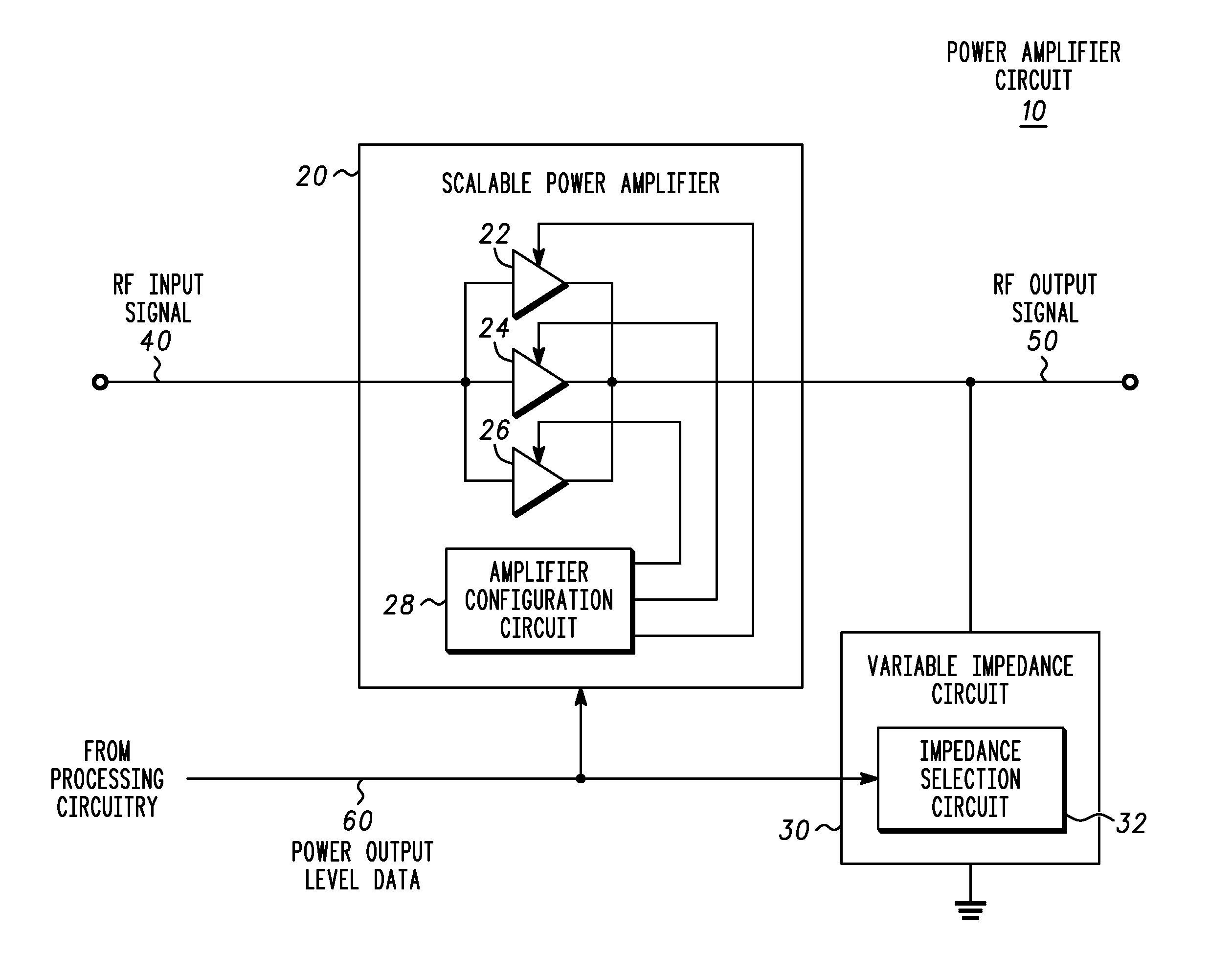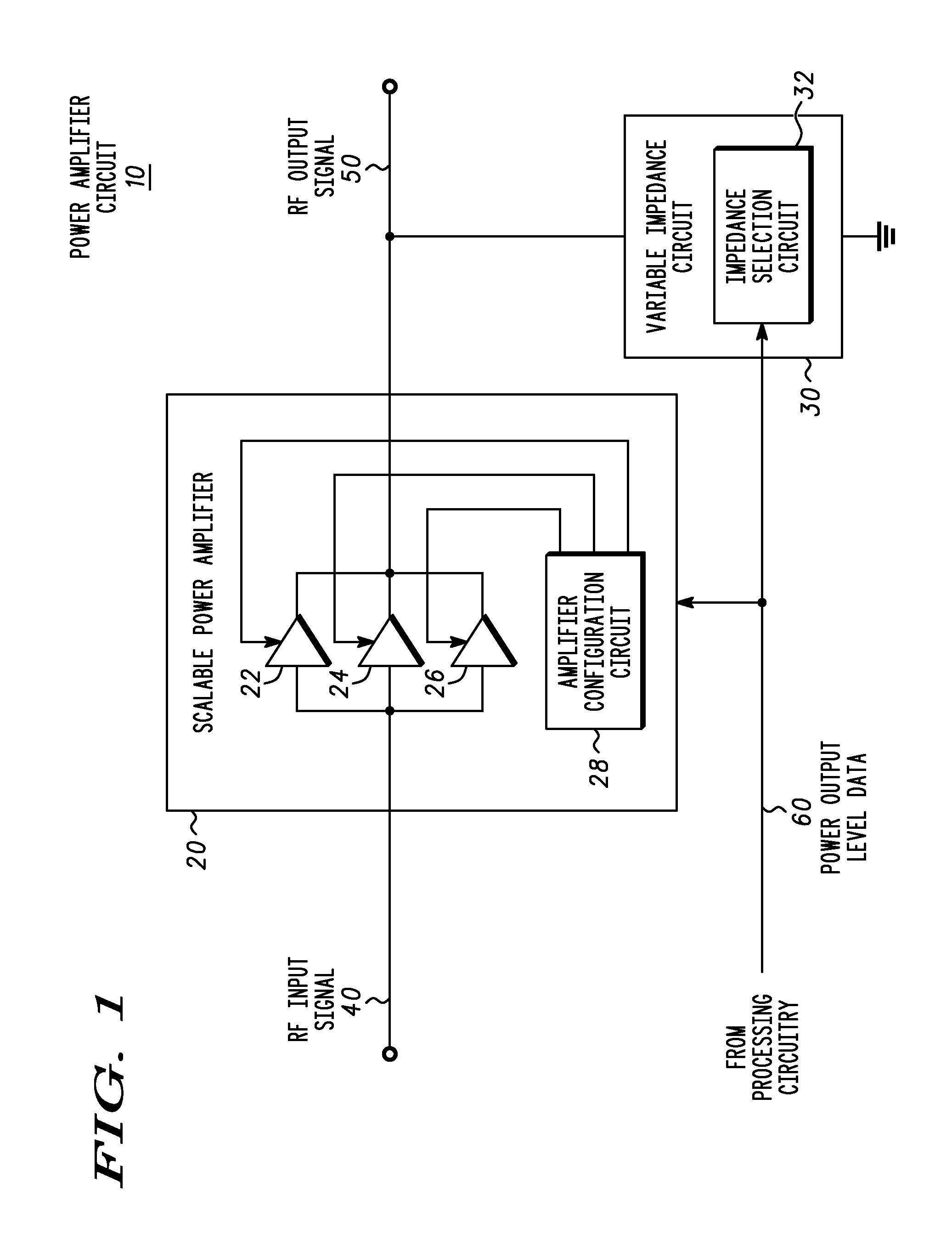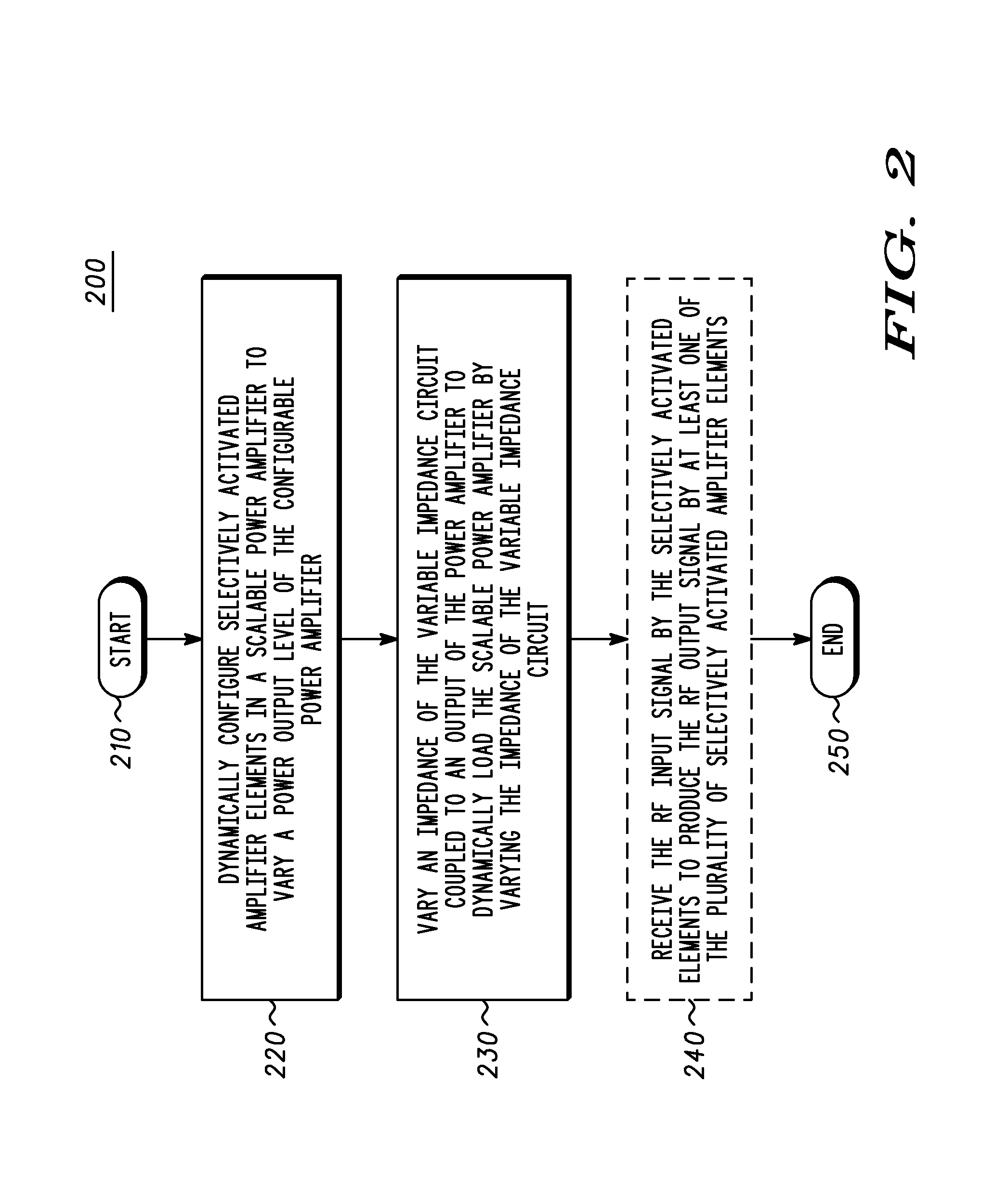Low power consumption adaptive power amplifier
a power amplifier and low power consumption technology, applied in the direction of amplifiers with semiconductor devices/discharge tubes, gated amplifiers, gain control, etc., can solve the problems of power amplifiers that sacrifice power efficiency at lower power levels, typical power amplifiers with less than optimal efficiency, and less efficient power amplifiers
- Summary
- Abstract
- Description
- Claims
- Application Information
AI Technical Summary
Benefits of technology
Problems solved by technology
Method used
Image
Examples
Embodiment Construction
[0020]A power amplification circuit includes a scalable power amplifier to produce an RF output signal at an output of the power amplification circuit, and a variable impedance circuit coupled to the output of the power amplification circuit. The scalable power amplifier includes a plurality of selectively activated amplifier elements to produce the RF output signal in accordance with a desired RF output signal power level. The power amplification circuit selectively activates individual amplifier elements by, for example adjusting the power supplied to the individual amplifier element, and selectively decoupling the RF input signal to at least one amplifier element. The variable impedance circuit varies an impedance of the variable impedance circuit to dynamically adjust the value of the load coupled to the output of the scalable power amplifier
[0021]If the required RF output signal power level decreases for example, then individual amplifier elements may be selectively deactivated...
PUM
 Login to View More
Login to View More Abstract
Description
Claims
Application Information
 Login to View More
Login to View More - R&D
- Intellectual Property
- Life Sciences
- Materials
- Tech Scout
- Unparalleled Data Quality
- Higher Quality Content
- 60% Fewer Hallucinations
Browse by: Latest US Patents, China's latest patents, Technical Efficacy Thesaurus, Application Domain, Technology Topic, Popular Technical Reports.
© 2025 PatSnap. All rights reserved.Legal|Privacy policy|Modern Slavery Act Transparency Statement|Sitemap|About US| Contact US: help@patsnap.com



